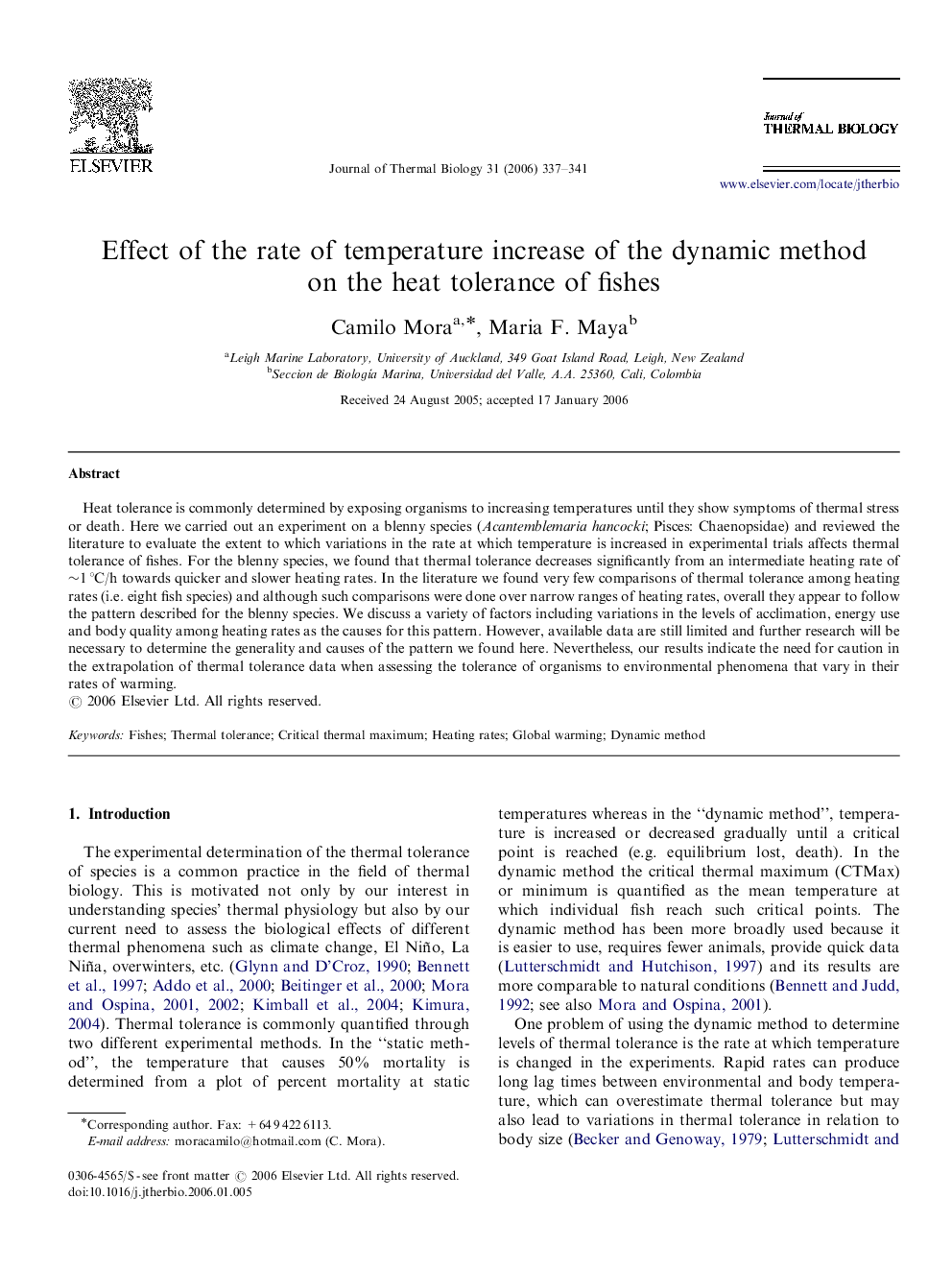| Article ID | Journal | Published Year | Pages | File Type |
|---|---|---|---|---|
| 2843846 | Journal of Thermal Biology | 2006 | 5 Pages |
Heat tolerance is commonly determined by exposing organisms to increasing temperatures until they show symptoms of thermal stress or death. Here we carried out an experiment on a blenny species (Acantemblemaria hancocki; Pisces: Chaenopsidae) and reviewed the literature to evaluate the extent to which variations in the rate at which temperature is increased in experimental trials affects thermal tolerance of fishes. For the blenny species, we found that thermal tolerance decreases significantly from an intermediate heating rate of ∼1 °C/h towards quicker and slower heating rates. In the literature we found very few comparisons of thermal tolerance among heating rates (i.e. eight fish species) and although such comparisons were done over narrow ranges of heating rates, overall they appear to follow the pattern described for the blenny species. We discuss a variety of factors including variations in the levels of acclimation, energy use and body quality among heating rates as the causes for this pattern. However, available data are still limited and further research will be necessary to determine the generality and causes of the pattern we found here. Nevertheless, our results indicate the need for caution in the extrapolation of thermal tolerance data when assessing the tolerance of organisms to environmental phenomena that vary in their rates of warming.
